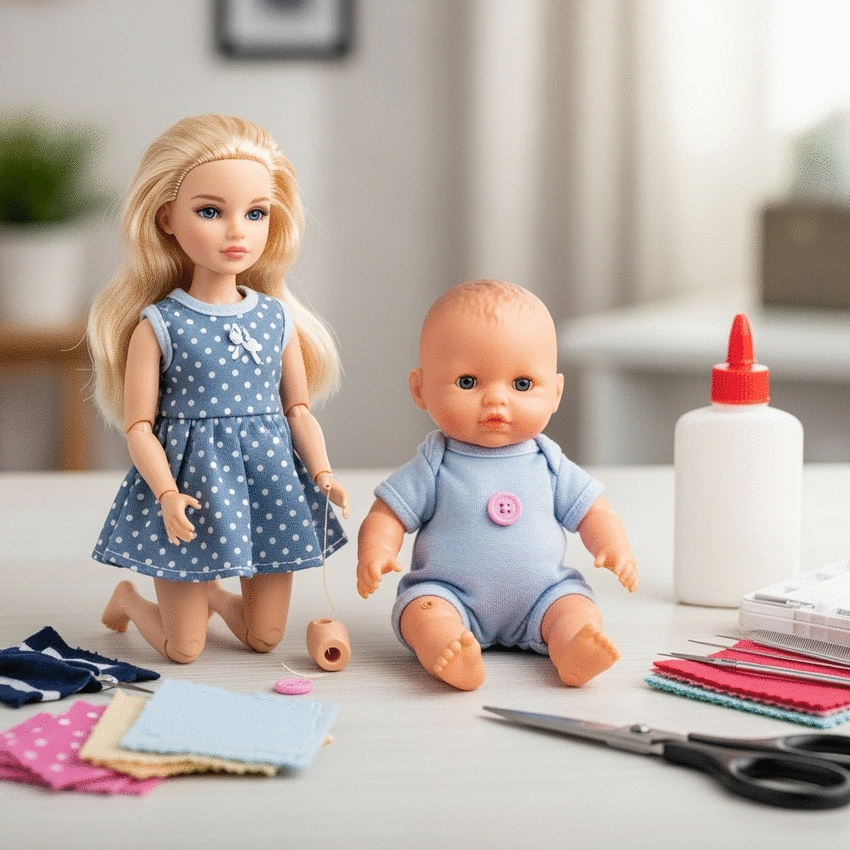Choosing the Right Doll for Kids
By Clara Whitmore / Oct 26
Did you know that regular maintenance is key to preserving the beauty and value of your dolls? Whether you're a passionate collector or a loving parent, mastering the art of doll repair can enhance your experience. Here’s what you will learn about keeping those cherished companions in top shape.
Understanding the distinction between routine maintenance and specific repairs is crucial for preserving your beloved dolls. The visual below highlights key aspects of each. For more specific guidance on maintaining your dolls, check out our guide on cleaning vinyl dolls at home.
As a doll enthusiast and a parent, I know how important it is to keep our loved dolls in perfect condition. Regular maintenance not only prolongs their life but also keeps them looking their best for imaginative play. Whether you own fashion dolls or baby dolls, understanding the basics of doll repair is an essential skill every collector and parent should have!
In this section, we’ll explore the importance of regular maintenance, the common types of damage to look for, and unique considerations when dealing with antique and vintage dolls. So, let’s dive in!
Maintaining your dolls should be a priority if you want to preserve their beauty and value. Here are a few key reasons why regular maintenance is essential:
By prioritizing regular maintenance, you'll ensure that your dolls remain cherished companions for years to come! It's also important to consider doll safety for Australian parents, making sure any repairs adhere to necessary standards.
Knowing what damage to look for is crucial in maintaining your dolls. Here are some common types of damage that can occur:
Being vigilant about these common issues can help you address them before they become more serious problems. Remember, the sooner you spot an issue, the easier it is to fix!
Antique and vintage dolls often come with their own set of challenges. When dealing with these treasures, it's important to consider:
When working with antique and vintage dolls, I recommend proceeding with caution. If you're unsure, it's always best to consult with a professional doll restorer who can guide you through the process!
When performing any repairs on your dolls, always test cleaning products on a small, inconspicuous area first. This ensures that the materials won’t react negatively, preserving your doll's original condition. Additionally, consider documenting your repair process—taking before and after photos can help you track your progress and share your successes with fellow enthusiasts!
As we wrap up our exploration of doll repair basics, it's important to remember that caring for your dolls is a rewarding experience! Whether you're just starting your doll journey or you're a seasoned collector, understanding the essential repair techniques can help you keep your dolls in great shape. Regular maintenance not only preserves their beauty but also ensures that they remain cherished companions for years to come!
Here’s a quick recap of the essential repair techniques we've covered:
Feel free to revisit these sections whenever you need a refresher or encounter a specific issue. Remember, every little fix you make can breathe new life into your beloved dolls!
Don't shy away from trying some DIY repairs! With a bit of practice and patience, you’ll likely surprise yourself with what you can achieve. I still remember the first time I successfully restored an old baby doll from my childhood. It felt so fulfilling! Trust me, starting small can lead to bigger projects down the line.
So gather your tools, grab that beloved doll needing some love, and dive in! You'll learn through the process, and if you ever hit a snag, resources are always available to guide you. For those looking for suitable gifts, consider these unique doll gifts for kids.
To ensure your doll repair projects go smoothly, it’s essential to have the right tools at your disposal. Here’s a handy list of recommended tools:
Investing in quality tools can make a significant difference in your repair outcomes. They also allow you to tackle various types of repairs with ease!
One of the best ways to enhance your doll repair skills is by connecting with like-minded enthusiasts. Online communities, forums, and social media groups can be a treasure trove of shared knowledge and experiences. Engaging with experts can also provide you with tips and tricks you might not find in manuals or tutorials. Plus, it’s a great way to share your journey!
There are many fantastic resources available online for doll repair. Here are a few places to start:
Dive into these resources to build your confidence and expand your skills. Remember, the world of doll repair is vast and filled with supportive communities!
Here is a quick recap of the important points discussed in the article:

 Choosing the Right Doll for Kids
Choosing the perfect doll for your child is more than just about play; it’s a decision that influe
Choosing the Right Doll for Kids
Choosing the perfect doll for your child is more than just about play; it’s a decision that influe
 Popular Dolls for Kids in Australia
What if I told you that playing with dolls is more than just fun? It's a gateway to emotional intell
Popular Dolls for Kids in Australia
What if I told you that playing with dolls is more than just fun? It's a gateway to emotional intell
 Holiday Gifts for Aussie Kids
As the holiday season approaches, thoughtful gift-giving becomes a joyful journey. The perfect gift
Holiday Gifts for Aussie Kids
As the holiday season approaches, thoughtful gift-giving becomes a joyful journey. The perfect gift